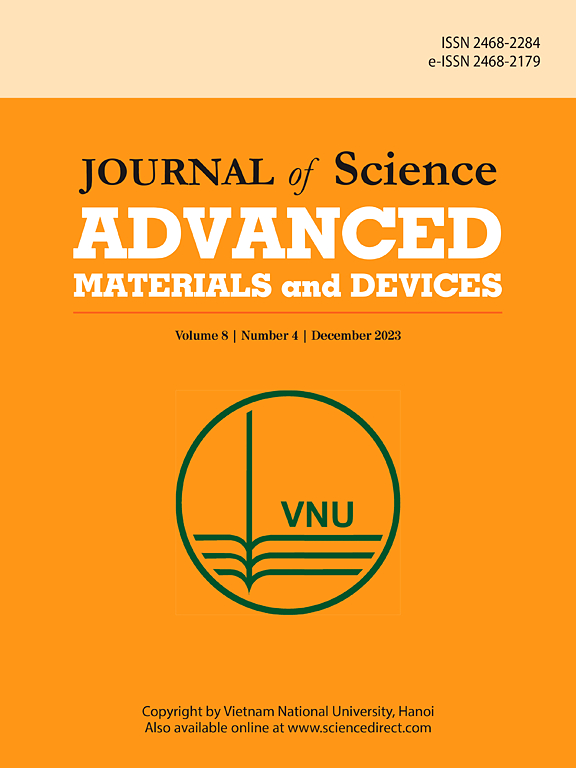Effect of microstructure and mechanical properties of Al/Mg dissimilar alloy with Pb interlayer by friction stir welding
IF 6.7
3区 材料科学
Q1 MATERIALS SCIENCE, MULTIDISCIPLINARY
Journal of Science: Advanced Materials and Devices
Pub Date : 2025-01-30
DOI:10.1016/j.jsamd.2024.100845
引用次数: 0
Abstract
Combining aluminum/magnesium(Al/Mg) dissimilar alloys has great potential for realizing automotive lightweighting. The microstructure and mechanical properties of Al/Mg dissimilar alloy with stir-pin rotation speed and thickness of the Pb foil intermediate layer by friction stir welding are investigated. The experimental results indicate that the ideal joints can be obtained with the stir-pin rotation speed of 800∼1100 rpm when the welding speed is 30 mm/min. The intermetallic compounds in the weld nugget zone are mainly composed of Mg17Al12 and Mg2Al3. The tensile strength of the joint increases first and then decreases with the increase of the stir-pin rotation speed, reaching a maximum of 168 MPa at 1000 rpm. By introducing Pb foil as an interlayer in the friction stir welding of Al/Mg dissimilar alloys, based on the optimum process parameters for joining Al/Mg without an interlayer, the thickness of the Pb foil interlayer was varied in the range of 0⁓0.2 mm. The intermetallic compounds in the weld nugget zone of the joint are mainly composed of Mg2Pb and Mg17Al12. The tensile strength of the joint initially increases and then decreases with the increase in the thickness of the Pb foil intermediate layer, reaching a maximum of 193 MPa at the thickness of 0.1 mm under the welding speed is 30 mm/min and the stir-pin rotation speed is 1000 rpm, which is 15% higher than the strength of Al/Mg joints without an interlayer, and accounts for 70% of the AZ31B base material strength.
搅拌摩擦焊对带有铅夹层的铝镁异种合金微观结构和机械性能的影响
本文章由计算机程序翻译,如有差异,请以英文原文为准。
求助全文
约1分钟内获得全文
求助全文
来源期刊

Journal of Science: Advanced Materials and Devices
Materials Science-Electronic, Optical and Magnetic Materials
CiteScore
11.90
自引率
2.50%
发文量
88
审稿时长
47 days
期刊介绍:
In 1985, the Journal of Science was founded as a platform for publishing national and international research papers across various disciplines, including natural sciences, technology, social sciences, and humanities. Over the years, the journal has experienced remarkable growth in terms of quality, size, and scope. Today, it encompasses a diverse range of publications dedicated to academic research.
Considering the rapid expansion of materials science, we are pleased to introduce the Journal of Science: Advanced Materials and Devices. This new addition to our journal series offers researchers an exciting opportunity to publish their work on all aspects of materials science and technology within the esteemed Journal of Science.
With this development, we aim to revolutionize the way research in materials science is expressed and organized, further strengthening our commitment to promoting outstanding research across various scientific and technological fields.
 求助内容:
求助内容: 应助结果提醒方式:
应助结果提醒方式:


